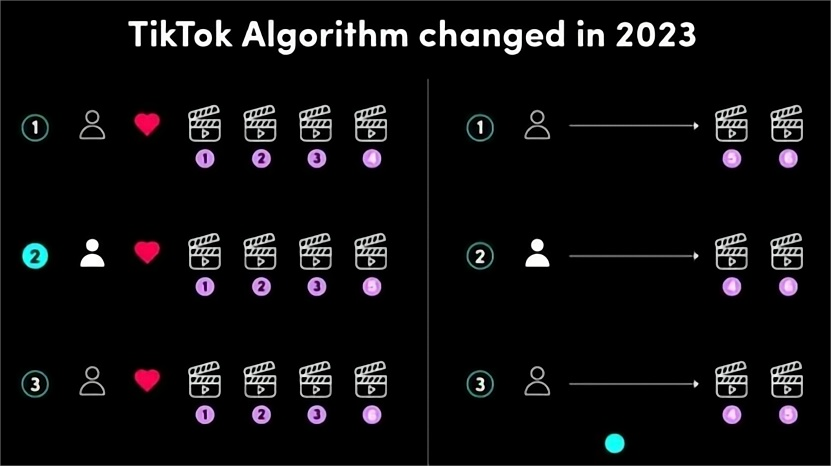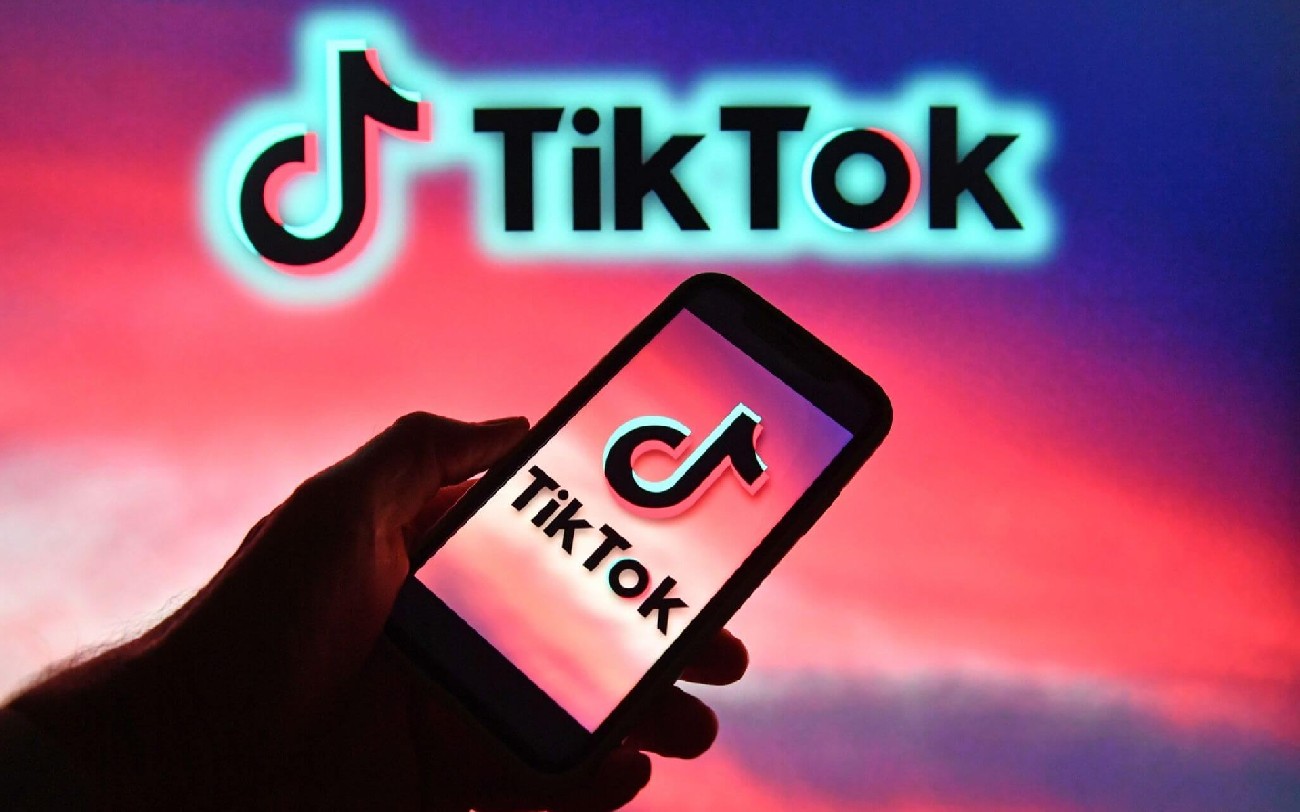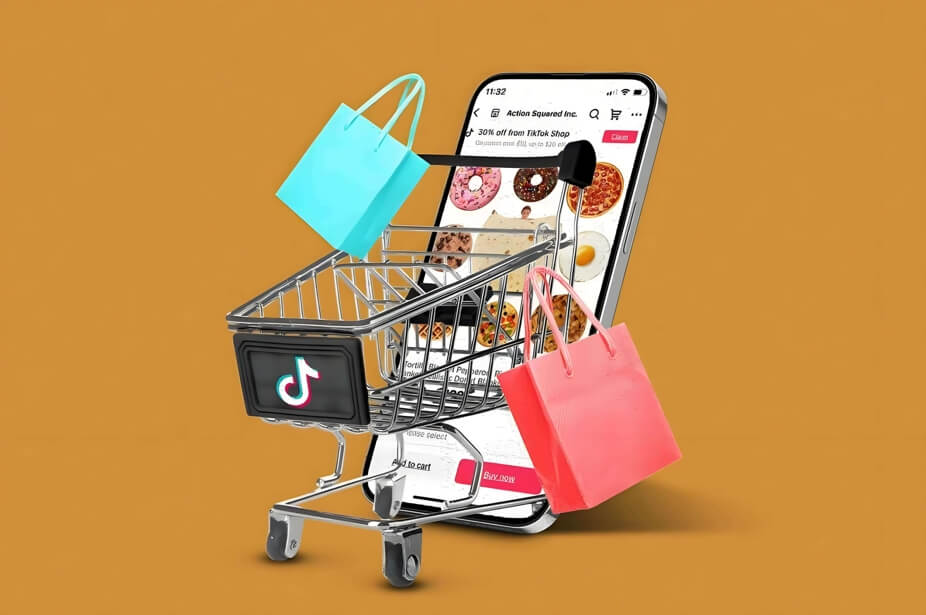To succeed in social media e-commerce, you must focus on becoming a leader in a specific category or user group. By doing so, you align with the trends of both the platform and the times. Let's dive into the journey of TikTok e-commerce.
TikTok E-Commerce Journey
In the world of cross-border e-commerce, three types of people are more likely to succeed:
-
Early Movers in Cross-Border E-Commerce – Those who have been in the game since platforms like Amazon, eBay, Shopee, and Lazada emerged. They have mature supply chains and operational systems.
-
Local Resources and Factories – Those with local factories or resources have the geographical and cost advantages.
-
E-Commerce Veterans – Like myself, who have experienced the full e-commerce cycle in China and gained deep insights into the industry. If you've gone through the commercial cycles, you can quickly adapt and see results on any platform.
I have always focused on brand building in the e-commerce space. In 2020, I seized the opportunity during Douyin’s boom phase, leveraging brand partnerships and live streaming to generate significant revenue. During this period, I utilized my resources from shelf e-commerce, expanding my team from one person to a 200-member operation.
However, competition in the live-streaming industry is fierce. After training live streamers who can generate tens of thousands in daily sales, they often ask for higher pay, get poached by other companies, or go solo. This made me realize that the live-streaming model is unsustainable.
Therefore, I shifted my focus to cross-border e-commerce, concentrating on short videos rather than live streaming. In today's market, supply chains across industries are in surplus, so the supply chain is no longer the issue. The key is how to attract users through short videos and increase conversion rates.

Discovering the Southeast Asian Market
We identified great potential in the Southeast Asian market. E-commerce accounts for only 10% of total retail in Southeast Asia, far below the global average of 19%, and much less than China’s 30-40%. This shows that while the profit margins in Southeast Asia may be lower, its growth potential is massive compared to the domestic market.
Our strategy focuses on beauty and personal care products because of the wide demand in Southeast Asia. When selecting products, we follow three principles:
-
Effectiveness Products – Those that offer clear solutions to consumer problems.
-
"IQ Tax" Products – Novel or interesting products that attract buyers.
-
Low-Cost, High-Value Products – Items that offer great value at an affordable price.
For example, we tested a three-sided toothbrush in Malaysia, which was already popular in China. Using edited domestic content, our tests showed a return on ad spend (ROAS) of over 3x, with a gross margin of around 70%. By the second day, we launched full-scale ads, reaching over 600 orders in one day, and more than 1,000 orders on the third day.
Southeast Asia’s Unique Market Characteristics
Southeast Asia has a young population and high internet penetration. On average, internet users in this region spend nearly nine hours a day on social media and e-commerce platforms. This presents an enormous traffic and customer base for e-commerce.
The market is also relatively undeveloped, with most products being white-label, meaning there’s a huge opportunity for brand building and market dominance. By leveraging short videos and ad campaigns, we can quickly establish brand influence.
The U.S. Market and Growth Potential
Although we have not focused heavily on the U.S. market, it is important to note that the barriers to entry are higher, and the pace of content iteration is faster, making it more challenging for beginners. However, the growth potential in the U.S. cannot be ignored. For example, TikTok e-commerce is projected to reach a market size of $1.8 billion in 2023, growing 5-6 times year over year. The gap between the U.S. and domestic markets is significant, but this also represents enormous opportunities.
Key to Success: Local Resources and Supply Chain
Whether in Southeast Asia or the U.S., building local resources and a strong supply chain is key to success. Without a solid supply chain, it’s difficult to achieve sustained success in these markets. For companies and individuals interested in cross-border e-commerce, now is the time to seize the opportunities in this blue ocean market.
TikTok Viral Product Selection Strategy
Now let’s talk about TikTok’s viral product selection strategy. I'll keep it concise, and feel free to ask questions if anything is unclear. Our company’s approach to product selection and content creation is simple and direct, built on years of e-commerce experience. In short, we “borrow” ideas and then do it well.
I believe the essence of viral products is that they naturally generate demand and traffic. "Demand" means that during product selection, whether based on subjective judgment or supported by objective data, the product must meet a clear market need. In Southeast Asia or the U.S., we can verify this by checking platforms like Shopee and Lazada. If a product sells well on these platforms, it likely meets the demand requirement.
Next is the question of traffic generation. In social media e-commerce, content is king, and the most important asset is content. The success of your promotion depends largely on the quality of your content. If your product fails to perform well in Southeast Asia or the U.S., the issue is likely with the content, not the product.
In social media e-commerce, 80% of business is driven by short videos and live streaming. Consumers often make purchases directly from short videos or live streams without comparing prices. When buying, if brand considerations are set aside, the average price won’t be lower than $39 or $59. Even if the quality is the same, we tend to avoid low-priced products because they are perceived as inferior.
Our selection strategy revolves around three types of products:
-
Local e-commerce picks – Products popular on Shopee, Lazada, etc.
-
Chinese viral products – Often what works in China also performs well in Southeast Asia.
-
Essential and effective products – These can succeed in overseas markets as well.
We also use third-party data tools like Kalodata to aid product selection. These tools help us identify hot products promoted by key influencers, especially those with high sales and commission rates. We can then repurpose this content for paid promotion, solving the content creation problem.
When selecting products, we focus on three key factors: local demand, content type, and competitive landscape. We verify whether a product meets local market demand, develop content strategies based on content type, and decide whether to bypass competitors or enter new categories.
For product selection, we set standards such as: gross margin over 50%, sales over 1,000 units, and review rate under 35%. These criteria help us identify products with potential. If a product has a high review rate, we usually abandon it, as this indicates it might be in a declining phase.
Finally, we focus on short videos and live streaming for monetization. In the U.S., if you're not fluent in the local language, live streaming may only provide short-term gains. In Southeast Asia, the market is still in its early stages, allowing for more flexibility in monetization methods.
Exploding Product Video Material Analysis
Now, let's talk about the third part—how to break down the material for successful short videos. First, understand that the core of paid advertising is quick harvesting. In social media e-commerce, we primarily target the A3 group. A1 to A5 represent different consumer stages, with A4 being those who have purchased, and A5 being repeat buyers. Our main goal is to capture the A3 group.
Materials generally fall into three categories:
-
Type A: Hard ads, with a simple structure and a focus on promotions.
-
Type B: Soft ads, focusing on product features and addressing user needs.
-
Type C: A hybrid between hard and soft.
In Southeast Asia, Type A and Type B materials are quite common. In the U.S. market, due to cultural and market differences, the preference leans towards native and entertaining content, such as starting with micro-storylines followed by Type B product introductions.
When creating content, it's essential to identify the purpose of the material—is it for creating demand (planting the seed) or for harvesting conversions? This can be determined by checking platforms like YouTube, Instagram, TikTok, and Facebook to see if the product has already been promoted. If it hasn't, the first five seconds of the video should focus on planting the seed, creating demand. If you're in the harvesting phase, the material should target the A3 group with refined 1.0, 2.0, and 3.0 versions of content.
Video material is typically structured into:
-
Introduction: Focus on engaging the audience and identifying target demographics by addressing product pain points or audience problems.
-
Middle: Deepen the product's appeal, aligning with the introduction.
-
Conclusion: Tie together various selling points with visual materials to ensure thematic consistency throughout the video.
When evaluating the content, focus on three metrics: Click-Through Rate (CTR), Relevance, and Completion Rate. In Southeast Asia, the click-through rate shouldn't fall below 2%, which is our standard. Relevance means ensuring the target audience and product pain points are aligned. For the completion rate, the ratio of three-second views to ten-second views should be around 1:2. If the ratio is lower, the opening might be too flat, or there could be a misalignment with audience expectations.
Cost Per Mille (CPM) isn’t inherently good or bad; it depends on your average order value (AOV). For example, if your AOV is below $40, a CPM within that range is considered reasonable. For AOVs between $60 and $300, CPM fluctuations within ±50% are acceptable.
Finally, don't aim to generate traffic just for traffic's sake; precision is key. In the U.S. market, materials tend to favor micro-storylines or influencer content, while in Southeast Asia, mixed-media formats are more common. U.S. materials need to emphasize localization and meet pre-existing demands, avoiding overly subjective approaches that miss the actual market demand.
TikTok Advertising Techniques
Next, let's cover some advertising techniques for TikTok. In today's advertising landscape, especially after transitioning from traditional e-commerce to interest-based e-commerce, there aren’t many intricate tricks to speak of. Earlier in e-commerce history, techniques like SEO, audience targeting, and keyword optimization were more crucial. But in social media e-commerce, 80% of audience targeting is driven by the quality of your content. Thus, the gap between seasoned advertisers and beginners is narrowing. The key is content quality.
In the traditional e-commerce era, operators often rose from assistant roles to product managers (PMs). But in social media e-commerce, the PM's role has diminished. Now, creators and directors are in high demand because content has become the most valuable asset.
In terms of advertising, I will focus on fundamental principles. The stronger your grasp of these principles, the better you can solve problems. Many hesitate because they don’t understand the underlying logic. The method is simple: core logic combined with environmental variables helps you quickly find the rhythm and patterns of the platform.
The foundational logic of ads is straightforward: in interest-based e-commerce, audiences range from A1 to A5—from broad groups to repeat buyers. In advertising, we should focus on deep goals, especially targeting the A3 group, as they are the potential customers with purchasing intent. While in traditional e-commerce, the focus was on SEO and audience optimization, in interest-based e-commerce, we aim to capture traffic first. With traffic comes costs and the data needed for future analysis.
During product and content testing, don't focus too much on the cost of paid ads. Instead, quickly test whether the product gets positive feedback. If it does, scale up your ads. The purpose of ads is twofold: testing and scaling—don’t expect them to help with strategic losses.
Early high bids don't necessarily mean high costs. The better the quality of the traffic, the more accurate CPM (Cost Per Mille) and eCPM (Effective Cost Per Mille) can be calculated. If you're unsure about bidding, you can multiply the CPA (Cost Per Action) by 70% to estimate it. In the initial stages, focus on capturing traffic rather than worrying about individual campaign costs, as the platform’s algorithms are still not perfect.
Modifying your bid can reset the campaign's learning phase, so instead of lowering the price of an existing plan, it’s better to copy the plan and set new bids. Additionally, if there’s a significant discrepancy between CPM and CTR, you can launch multiple campaigns under different advertising accounts to balance campaign weights, then replicate the best-performing account.
In social media e-commerce, don’t just learn for the sake of learning—put theory into practice. Data analysis involves looking at CTR and CD to gauge the intent level of creative materials and target audiences. Poor CTRs often stem from mismatches between the first three and ten seconds of content. Hence, the framework and logic behind your materials are crucial.
CPM reflects competition intensity and audience quality. If your audience targeting is accurate but your CPM is high, it indicates a lot of competition. This calls for innovation in your content, particularly in the first three to five seconds of your videos.
In conclusion, the key is precision traffic. If you chase traffic without focusing on accuracy, you’ll see poor conversion results. Focus on niche categories and targeted groups, becoming a leader in these areas. This will allow you to seize opportunities as consumers' mentalities shift.
Building Advertising Plans
There are four core types of advertising plans, essential for any campaign:
-
Rapid Scaling Plans: These are designed for quickly capturing large amounts of traffic.
-
Cost Control Plans: Meant to control costs while ensuring effectiveness.
-
Breakeven Plans: Ensure that revenues balance with expenses.
-
Low-Cost Plans: Capture traffic at minimal costs, typically bidding at 20-30% of rapid scaling bids.
When testing products, we typically use rapid scaling plans, creating two series, four groups, and two ads per group. For Southeast Asia, each advertiser can set a budget of $6 to $10. After the budget is reached, we analyze the data, focusing on key metrics like CTR, add-to-cart rate, loss, and CPA. If the results are promising, we conduct a second test, expanding the ad group and switching to cost control plans. If the ROI remains positive, we begin scaling with a combination of plan types.
The scaling process follows four steps: filtering effective materials, creating new plans, maintaining an 80% new and 20% old plan ratio, and adjusting based on system performance. Remember that due to inaccurate audience tags early on, ad lifecycles may be short, requiring constant plan creation.
The essence of advertising lies in monitoring rather than just creating plans. If the ROI is poor but CTR and add-to-cart rates are high, consider increasing ad visibility. If this doesn’t work, it’s best to move on.
Finally, let’s talk about team building. In social media e-commerce, the most crucial position is the content director, as they determine project success. Operators need strong content awareness and sensitivity to traffic.
In summary, social media e-commerce revolves around three stages: capturing traffic, optimizing in the middle phase, and scaling in the final phase. If you find a successful product, act quickly and maximize your efforts in the shortest time. Avoid strategic losses and don't get stuck on sunk costs. Success in e-commerce boils down to repeating simple tasks until they become second nature. Stay focused, become a leader in your niche, and let the platform propel you forward.



